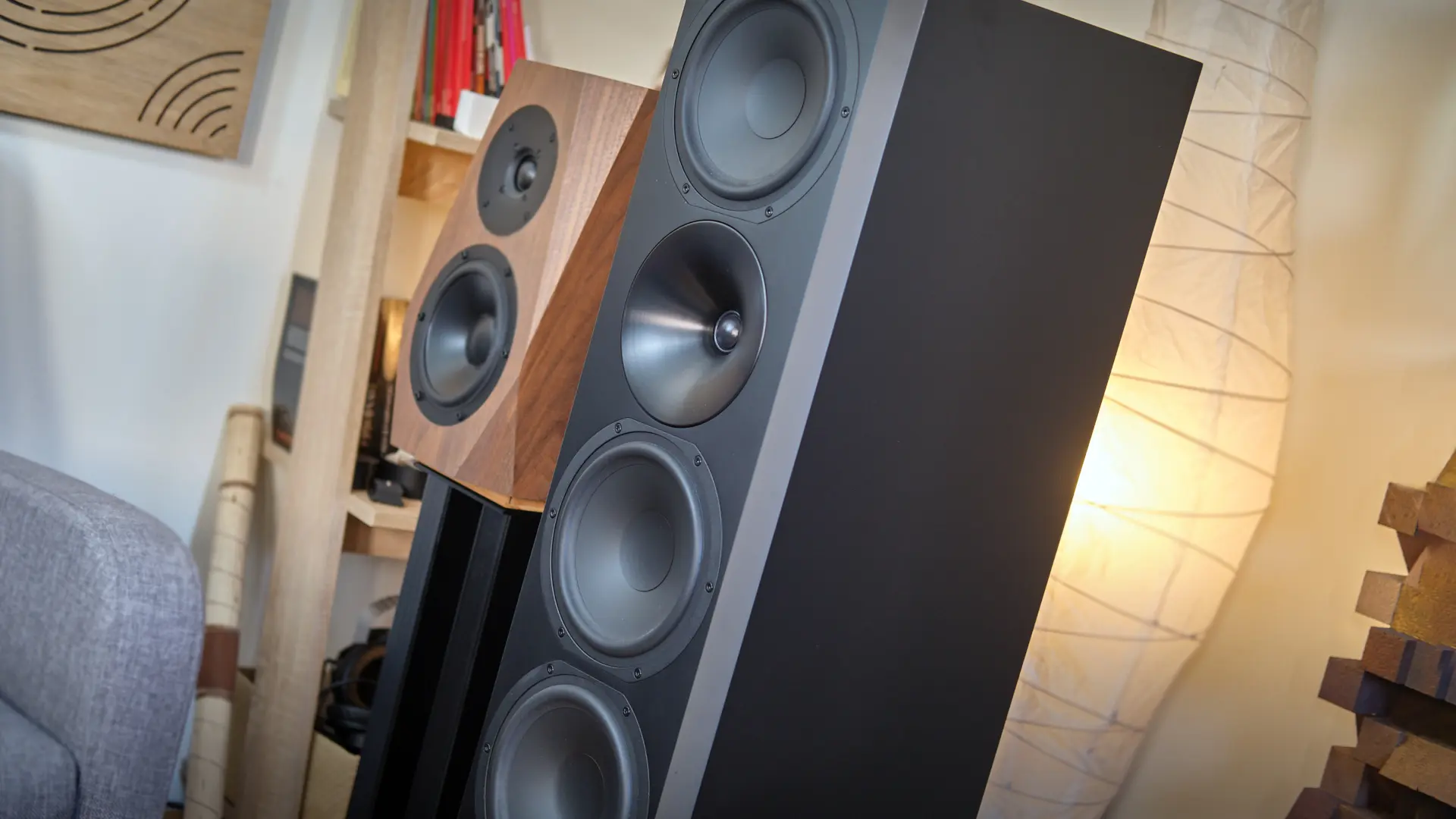Imagine my surprise when an unknown individual I never met called me and asked me if I wanted to test Arendal 1723 Tower THX. As it turns out, it was a fellow audiophile located in Belgrade that has just ordered these beauties, was familiar with my work, and was willing to loan them to me. I didn’t hesitate, so DHL delivered them to my doorstep a few days later. So just before I continue with this review I want to thank Radomir for this loan.
Build and Features
Arendal 1723 Tower THX are big and heavy speakers. It was a two-person job to bring them to my apartment, and not an easy one either. Once out of the box, you can see why, they feature a very solid build of thick HDF, weighing 50 kg (110 lbs) each. I won’t bother you with tech specs here, you can see all you need about the drivers used, crossover, etc. in the spec table at the end of this review. However, I will mention a very decent sensitivity of 92 dB/2.83v/1m because this declaration feels realistic to me, which is often not the case as manufacturers often tend to inflate this number.
Another feature worth mentioning is that this is a bass reflex design with three ports on the back of each box. What’s interesting about it is that you can alter the bass response by choosing how many of these you keep closed with a foam plug, and how many are opened. You can see the frequency response graph below showing you the difference between keeping it sealed vs opening all three ports.
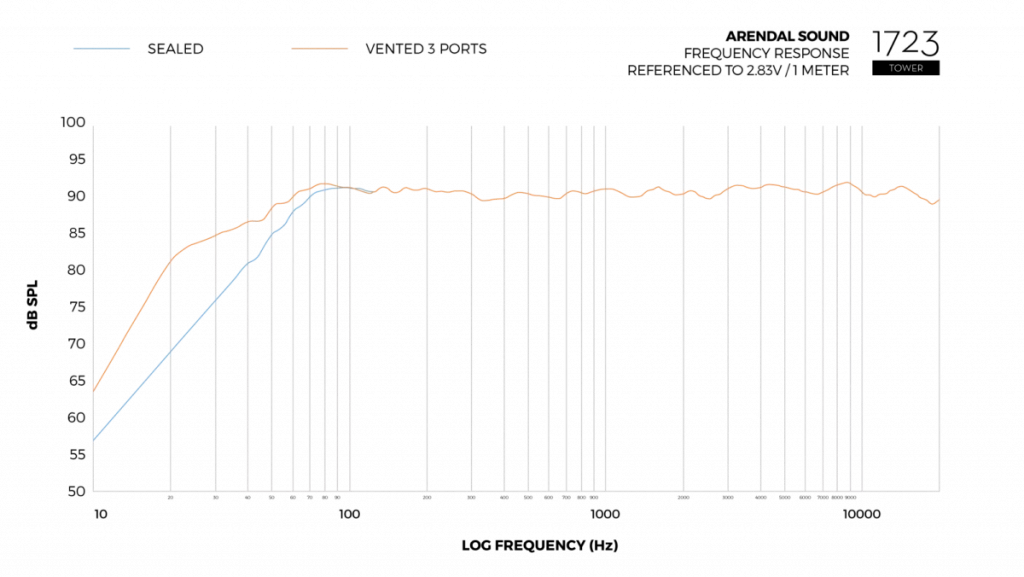
My particular listening room measures 4.4 x 7.2 meters and is of a somewhat irregular shape, and I found a completely sealed arrangement to lack a bit of bass grunt. After some experimentation and listening, I settled on only one port opened, which provided me with a deep but tidy bassline. Two opened were also good if I was aiming for a bit more bass emphasis. Anyhow, I find this solution with few levels of gradation very convenient since I do remember having speakers that sounded too lean when sealed, but too boomy when ported.
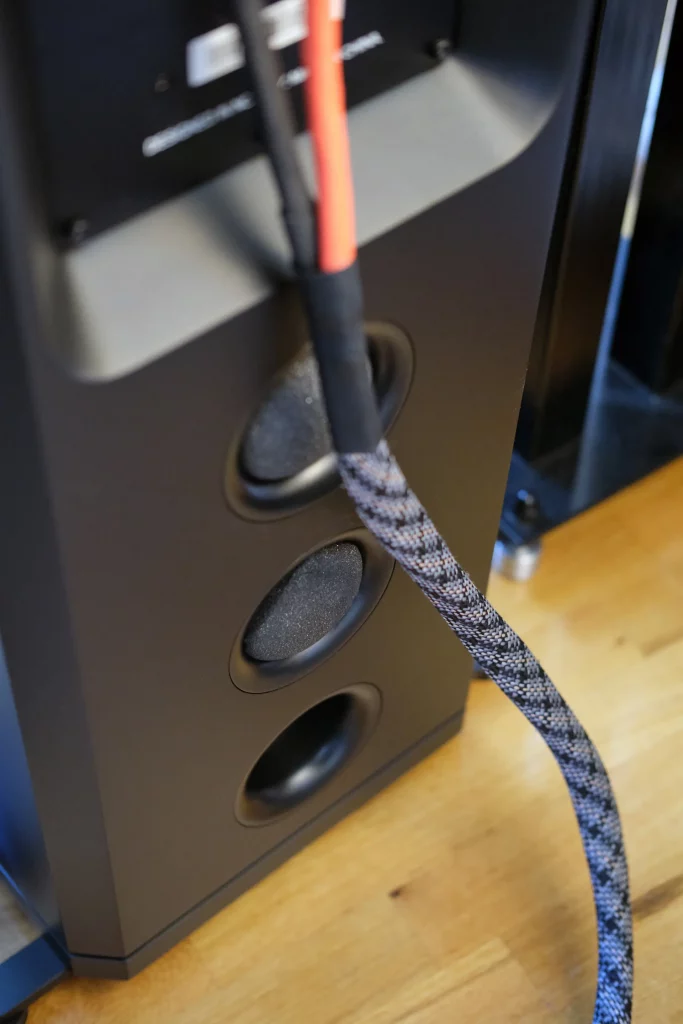
Testing
Once everything was settled and ready to go, I connected them to my Acoustic Invader preamp and amplifier combination, with the preamp nowadays being a higher-end version of the same brand, named Fulcrum. This capable combination had no problems driving Arendal 1723 Towers. As a source, I used several DACs including Gustard R26, A26, and my own DIY tube DAC that shares many features with Lampizator DACs. So how did these puppies sound?
Sound
Arendal 1723 Tower THX’s sound very open. Their sound signature could most easily be described as bright and airy up top, very open in the midrange, and authoritative in the lowest register. I had to say that I was a little worried about how will these big speakers settle in my listening space, but I needn’t be. The bass goes deep but has great speed and control, punching when it needs to, and it never falls out of line with the rest of the spectrum. Midrange feels very open and uncolored. Detail retrieval is fantastic, but if you’re looking for some kind of romantic warmth, it’ll have to come from some other part of your setup because 1723 Towers are simply not tuned to sound warm or sweet. The highest spectrum is in the same fashion very open, airy, and highly revealing. It’s important to note here that I never noticed any sort of annoying sharpness or edginess, but bright and open is in the description of these Arendal’s tonality and it is something to count on when pairing them.
Arendal 1723 Towers are not very picky about positioning but will appreciate it if you can give them a little room to breathe. In that case, they’ll reward you with a really big soundstage. Great high-frequency dispersion only adds to that feeling, and that doesn’t change no matter your listening position. Talking about the soundstage, it is very wide and tall, creating the sensation of a big sound wall in front of you in a way that no small speaker possibly could.
The last thing I wanted to talk about is dynamics. Using several bass and midbass drivers, and also placing a tweeter inside a waveguide, made these speakers very responsive and sensitive. At lower listening levels, 1723 Towers sound more effortless and fill the room with more sound than most speakers I had a chance to audition in my own space. As you crank up the volume, they get more dynamic but keep that effortlessness going. To put it simply, they’ll sound big, energetic, and responsive no matter the volume you’re listening at. This is something that only big and truly sensitive speakers can offer. Big dynamic swings that are not compressed are another advantage of this kind of design. This actually leads me to the next part of the review.
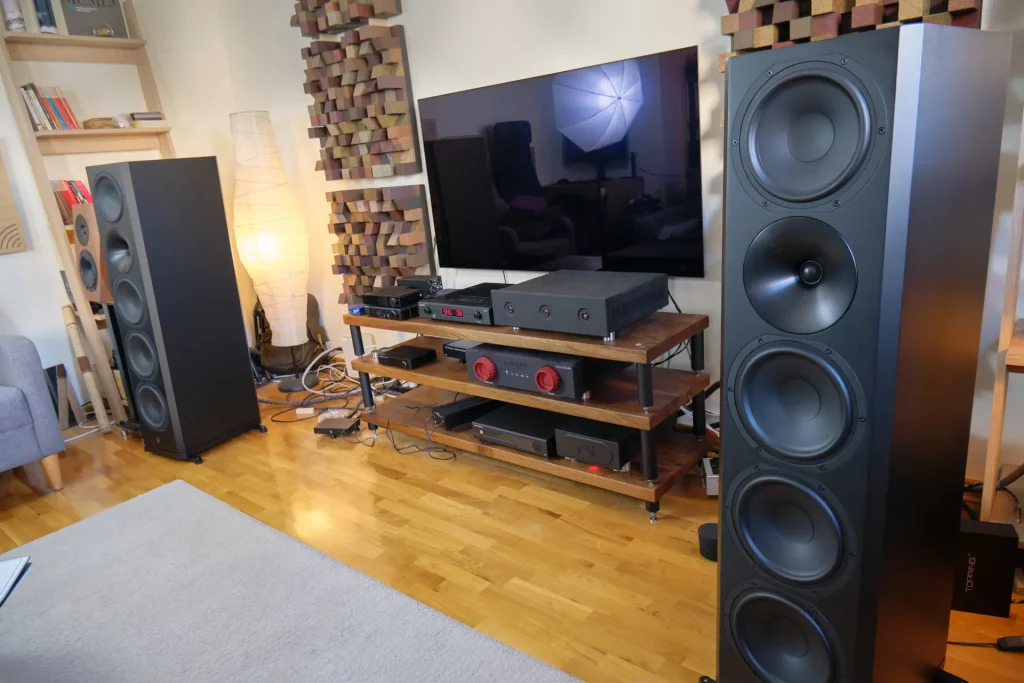
Pairing
As mentioned in the previous section, Arendal 1723 Tower is an open and bright-sounding speaker. Because of that, I prefer to add a bit of natural warmth and sweetness to the upper registers. Since my power amp is based on a very neutral-sounding IcePower 1200AS2 module, that task was up to the preamplifier and source. For example, an R2R DAC like Gustard R26 clicked better than the strident-sounding Topping D90LE. A very smooth and coherent-sounding Tube DAC was an even better match. In the same way, my rich-sounding J-FET Acoustic Invader preamplifier or Schiit Freya+ in a tube mode were better matches than Freya+ in passive mode or Topping Pre90.
I didn’t have these at the time of testing, but recently I was listening to a great tube preamp EAR 868 and tube amp EAR 534. These are very smooth, natural, and slightly sweeter-sounding components that I believe would pair splendidly with Arendals, bringing pure music enjoyment.
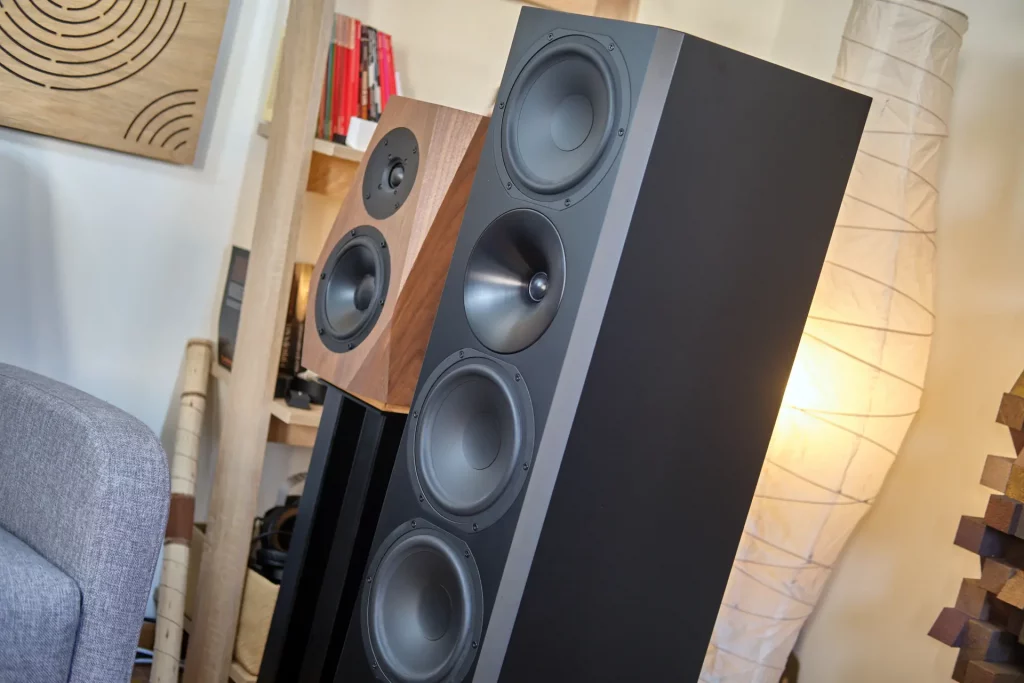
Comparisons
I’ll keep it short here because I have to. As you might know, I’m not that big on big speakers because really good big speakers are really expensive too. With my limited budget, I tend to prefer smaller but higher-quality ones. No commercial speaker that I personally listened to at this price point, like Dynaudio Focus 360 or KEF R7 could fully compete with Arendal 1723 Tower THX. Arendal is more revealing, has a tighter bassline, a bigger soundstage, and is easier to drive. I always felt that big speakers of this price are somewhat sluggish, and tend to overwhelm my room and other similarly sized rooms compared to a good standmounter. Well, I never felt that way with 1723 Towers, there wasn’t even a hint of them being sluggish or boomy in any way.
Now let’s compare them to my own high-quality standmounters Spirit Winds that I built myself to a very high standard. Expectedly, Arendal 1723 Towers sound bigger. They can develop a wider and taller wall of sound. They’re more effortless when it comes to dynamics and sounding alive at lower volumes. They’re also slightly brighter and more open up top. My Spirit Winds are slightly darker sounding which feels more natural to me. They do make for a narrower but deeper soundstage with a darker background. Inside it, instruments and vocals tend to be layered and pinpointed with greater precision. So that would be it in a nutshell, my smaller speaker with really high-quality drivers, crossover parts, and boxes sounds a bit more natural and is better with layering and pinpointing. This was great for country, jazz, or any acoustic music with lots of spatial cues. Arendals punch back with noticeably greater dynamics, not as well layered but certainly a wider and taller soundstage. This was great for electro, pop, rock, and definitely for movies.
Conclusion
If I was ever tempted to buy a big speaker that doesn’t cost more than my car, it was with Arendal 1723 Tower THX. It’s the first big speaker at this price point that sounded so tight and resolving that I wouldn’t miss my stand-mounters that much. The price-to-performance ratio of this speaker is truly high. This kind of value is rarely found with well-established brands that sell through local dealerships. Damn, I’ll just be straight and say that I never saw this kind of value. All that said, if you have the space to accommodate it, 1723 Tower THX should be at the top of your speakers-to-consider list.
| ARENDAL 1723 TOWER THX – CHARACTERISTICS |
|
DESIGN: 2.5-way |
